White Technicalities Issue 56/30/2021 Covered in this article- Testing the Steam Generator and pipework, pressure vs temperature, burner howl, fuel tank safety, Flowmotor fuel valve adjustment made easy, packing water pumps, steam valves, etc.
11. Is there an easy way to test the integrity of the steam generator coils throttle seat, water check valves, etc.? Ans. Yes there is. Close throttle, open right side blow off valve, and use the hand water pump until water dribbles out of the blow off. Close blow off and use all your muscle to pump up 400-500 PSI on the steam gauge. First time this is done pressure may drop off a bit as there is always a little air in the coils. Open throttle and bleed off air. Do this a few times or until the pressure holds steady. You should be able to pump 400-500lbs. pressure at night and have 100-200 lbs. showing the next morning. If your White system won't do this, there are too many leaks. Until they are fixed you're wasting your time in trying to tune up and drive your car!
0 Comments
Tony Marriott writes: Lots of time has passed and lots of challenges in life over the last three years but I think finally the tide is turning for the better. Sometimes difficult decisions have to be made and I think one of my hardest has to of been what was too happen with the White Steam Car that Richard always wanted. Over many years he worked through the car replacing , rebuilding and resurrecting it from its slumber. After he was taken badly, work near on stopped apart from the body going away and being painted by Chris. As time went on the car was left in the garage awaiting the day he felt better and regained interest, but unfortunately this was not case. In early 2020 he lost his fight with the big c word . Lots of people asked me what my plans were for the car including Chris, Harold, and our lot at home. The word pass came to mind as I have not a clue on things such as this. Eventually the call came from Chis that the body was ready to collect, so trailer on, and off we went. When the doors opened to the shed and the body was revealed the decision was made. Chis asked once more what's to be of the car , my reply was we are going for it ! Over several Saturday mornings myself, Tris and Millie refitted and started sorting the rest of the car. We managed to find a relatively local upholstery chap who has done a cracking job and done us and the old man proud. I've just brought the car home today ready for pipework and finishing off. Hopefully we should be out under steam next year. I would highly recommend the upholstery chap Russell Davies, thanks for your assistance. Anyhow here are the photos of the results. White Technicalities Issue 46/4/2021 Covered in this article- Burner Nozzle Hole Size, White Sub-Burner, Flowmotor control, thermostat rod, modulating fire, dragging fire.
Quiz Questions 1. Can One rely upon the size of the holes in the main burner nozzle as specified in the Owner's Manual? Ans- No. The Chemistry of fuels today is not the same as it was seventy years ago. The trick is to try bigger and bigger hole sizes until you get the burner to howl constantly, then go one hole size smaller. I use regular no-lead in the main burner because I get it anyplace while on tours. And I have a nozzle drilled for it. Around the place here I add 20% no.#2 Diesel to the no-lead. I have to use a smaller hole size when using this heavier fuel but the car has more pep and the burner stays on less each cycle. Straight no-lead is actually a little bit light for your White Steam Car. 2. Can no-lead be used in the sub burner (on the New Regulation Whites)? Ans. Not really. It will plug up the passages after a few hours running. Towards the end the flame gets dirty and yellow and then one has trouble with the main burner. Unlike the Stanley whose pilot burner in no way effects main burner fuel vapourisation, the height of the sub burner flame on the White does effect main burner vapourisation. There is only one satisfactory fuel for the White sub burner- Coleman Lantern Fuel or its equivalent. Coleman is expensive. CHEVRON make an identical lantern fuel and here in a 55 gallon drum, delivered to my farm, it is $2.35 per gallon. Using it, the sub burner in the Model M is now on its second summer and has not been out of the car. It's flame is just as pretty now as when I installed it over a year ago. White Technicalities Issue 35/2/2021 July, 1983 Covered in this article- Dick Hempel’s Steam Car Background, a simple check list of the White “New Regulation” System. Dear Friend: In 1946 I was 26 years old and lived in Kansas City when I bought my first White Steam Car, a 1909 touring, model “O”. I found it in a barn on a farm just outside Humboldt, Kansas. It has not run in years but was remarkably complete including all brass lamps, tools, top, etc. I had to pay $450.00 which was then twice my monthly salary, and a lot of money in those days. My dear dad and all my neighbours thought I was daft. Even before that I had owned a 1901 Locomobile and a 1917 Model 725 Stanley. In 1950 I bought my first Doble. I was then 30 years old, and had also owned numerous internal combustion antique cars. In 1949 I had organised the first official antique car tour ever held west of the Mississippi (except California). It was called “Run to Cameron” (Missouri). I took two steamers on that event and both ran fine. The 1901 Loco and the 1909 White. A friend who had never before operated a steamer, ran the Loco. I kept shouting instructions to him along the way, but he was scared to death the entire route. In those days the Horseless Carriage Club was a idy biddy outfit in far off California. I had no one in my area to advise me and few to write to. Roland Giroux (now sadly deceased) of Reno, Nevada helped me some by answering my questions, but he too was far, far away. At one Kansas City HCCA meeting held at my home in Kansas City, 1950, I had all four makes of famous steam autos running at the same time. Locomobile, Stanley, Doble, and White. So far as is known, no one has ever done this since. One of the 1909 White 0'S which Dick Hempel Restored- photo courtesy of https://www.pinterest.co.uk/pin/258464466091904732/
Doble e20, which was restored and owned by Dick Hempel- photo courtesy of photo courtesy of https://www.pinterest.co.uk/pin/258464466091904732/ Taken from the series Cars and How To Drive Them- No. XVI. The White by Colonel R.E. Crompton, R.E, January 14, 1903.
In learning to drive the car the following are the chief points to be noted. To get up steam it is, of course, first necessary to fill the petrol tank, the usual precautions being taken to prevent the possibility of the petrol being set alight by fire at or near the car. The air pressure above the oil in the oil (petrol) tank must then be pumped up to about 35 lb. on the gauge. The sub-burner is then ready to be lighted. This is done by allowing a little petrol to drop into the drip cup at the bottom of the sub-burner, by opening a valve which is fitted at the back of the sub-burner for a second or two. Care must be taken not to let any petrol drop on the ground, as it may take fire. To light the sub-burner apply a lighted match to the drip cup. One minute later the side cock of the sub-burner can be opened. There is a third cock fitted to the sub-burner which regulates the size of its flame. The best position for it is generally about one-quarter of a turn open, and this position can be judged by the noise made by the flame. The sub-burner flame should make a slight blowing noise, but if this noise is at all loud the sub-burner is wasting petrol, and this can be regulated by closing the regulator cock slowly until the noise nearly ceases. The side or starting cock of the sub-burner may be turned several times so as to be wide open. In about a minute and a half after starting the sub-burner it will have heated the main vapouriser sufficiently to enable the main burner to be turned on either from the handle at the driver's seat or by a second handle, which for convenience is fitted low down at the side of the car. This turning on of the main burner can easily be done in a minute and a half after the sub-burner is fairly alight. If it is attempted to turn it on sooner there is a risk of unvapourised petrol dripping at the induction jet, which is to be avoided. A minute after the main burner is turned on, if the boiler is full of water the steam pressure will rise to 150lb., and at this point the water blow-off cock should be opened and water blown off until steam begins to appear at it. If the engine has been previously oiled and greased, the car is now ready to start. White Technicalities Issue 23/25/2021 30th May 1989
Covered in this article- Post 1906 (New regulation) Thermostat, running board aprons, insulation, and disassembling steam generator coils. Dear Robert, Sorry to be so slow in getting back to you but I have truly been busy…. First, let me thank you for the photos. I’ll send you some later on. Also, I have received both of your letters. Now I shall try to answer them. It is important that you return all the items that I lent you, except those I marked for you to keep. If you don’t return them then I will not have a spare since what you have constitutes my spare, you understand? It cost $45.80 U.S to ship it to you but that will be more than made up by you when you return the things to me along with the new casting. Note that this letter also contains my 55 pages of White information (to be published in due course), which you requested, along with copies of the four newsletters I’ve written since. No charge-I’m happy to help when and where I can. Now, as for the thermostat casting, there are things you should note. In discussing them I will refer to the end with the square control box as the “front” and the other end as the “rear”.
The reason is this: If one wishes to adjust the temperature on the 1907-08 type all one needs to do is remove the right bonnet section, then reach down with an ordinary clock key, then make a half turn or so. A very easy arrangement. But the 1909-10 thermostat butts up against a frame cross shaft and thus there is no room for the clock key setup. To adjust these cars one must go to a lot more trouble. Remove the toe boards, take out the water valve needle, undo a lock nut, turn up or down the washer nut, etc.,etc. For all of the White Co. engineering improvements, this has to be considered as a step backwards. I did not send you the gland nut which fits onto the rear gland, simply because I did not have a spare to send. An ordinary gland nut looks like this: 1905 White Model E Instruction Manual3/25/2021 Check out this 1905 White Model E Instruction Manual! Taken from the series Cars and How To Drive Them- No. XVI. The White by Colonel R.E. Crompton, R.E, January 7, 1903.
The excellent results obtained by this car during the Reliability Trials of the Automobile Club have drawn the attention to probably the most interesting development of the application of steam to motor-car work that has been brought forward since Serpollet introduced the instantaneous steam generator, usually called the flash boiler. Mr. R. White, of the White Sewing Machine Company, Cleveland, Ohio, has for some years been working on the problem of fitting a boiler of a modified flash type to a steam car, which would be free from all the troubles that generally attend the introduction of a steam boiler into a motor car. Mr. White evolved principles of construction differing so widely from those introduced by Serpollet that they practically constitute a new departure. Instead of supplying a boiler which evaporates from water into superheated steam just the quantity required for each stroke of the engine, Mr White provides a boiler consisting of a continuous coil so arranged that the boiler does not empty itself at each stroke of the engine, but the small quantity of water contained in it constitutes a sufficient reserve to enable the car to run a few hundred yards, even when the water supply to the boiler is not maintained. In order to do this it was necessary to provide an automatic means by which the portion of the coil of tubes which contain only superheated steam should be prevented from being overheated to a dangerous temperature, and it was also necessary to provide an automatic means of supplying the feedwater in the precise quantity required to suit the ever-varying demands of a car travelling on a road. White Technicalities Issue 13/12/2021 Dick Hempel restored many steam cars over his lifetime, including several post 1906 White Steam Cars, with the "New Regulation" system Whites introduced from 1907. In 1988, Dr Robert Dyke from Cornwall acquired his first steam car, a 1908 White model L, as a project. He subsequently wrote to Dick Hempel, asking for help. This letter is the first of many letters Robert received from Dick. We will, in due course, publish all of Dick Hempel's letters, mainly focusing on the post 1906 White Steam Cars, and their technicalities, along with much other useful information for White Steam Car Owners that he provided to Robert and many others. The 1907 White model K which Dick Hempel owned and restored, now owned by Jay Leno. Photos courtesy of- https://thedayintech.wordpress.com/2013/08/22/speak-softly-and-carry-a-big-stick/ One of Dick Hempel's 1909 White 0's that he owned and restored-photo courtesy of https://www.pinterest.co.uk/pin/258464466091904732/. The 1909 Model M White which Dick Hempel owned and restored, now also owned by Jay Leno. Image courtesy of- https://www.dailymail.co.uk/tvshowbiz/article-2695957/Jay-Leno-enjoys-wind-hair-shows-one-steam-powered-cars.html January 28th 1989 Covered in this Issue- Flitch plates/Sill boards, Model L Flue/Chimney, Model L thermostat, Pyrometers. Dear Robert, I must confess that I am utterly delighted to receive your December 29th message with plea for help. In reading your words it is obvious you and your family are, indeed, dedicated to the steam hobby. I take my hat off to you, for you have taken on some mighty tough projects. For, of all the various makes of antique autos, The White Steam Car is by far the most difficult to comprehend, restore, tune up, and then operate as only it can in the hands of a capable owner. Which is why there are so few Whites being driven in the fullest sense of the word, driven. Your background in the field of diagnostics and interpretation of symptoms will serve you well, but I daresay will be challenged by your model “L”. In all the world there are perhaps eight men who truly have a handle on what makes a White tick. Let me say right off that I do not consider myself to be a steam car expert. But I have been tinkering with them for well over forty years. Whatever level of knowledge I may possess comes from making every mistake in the books plus a few not in any books and have the burn scars to prove it. I will do my level best to try to help you from afar, not always an easy task. In an effort to make a start I have taken the pages of your letter and numbered each question you ask. My replies will have corresponding numbers.
The two sills butt up against the wooden dash on my “K” and will butt against the dashboard on your “L”. They run back to the rear edge of the frame rails and overhang there too. Then a crosswise sill runs between them, also rounded on its back edge. The sills serve a secondary usage. If you install the leather aprons, the little metal snap or twist type fasteners are screwed into the rounded edge. Without the sill one has no place to screw in these fasteners.
If the body you have is made right its rear end should just exactly sit over the frame rear cross member. What I do not understand is why you are not able to set the body on the chassis frame rails and have it line up with the body hold down carriage bolt holes. Of course if you replaced bad wood with new wood then the holes are no longer there for a reference. But I say again the body rails should butt against the dashboard at front, and then the rear edge of the body should be even with the rear frame cross member. If the body you have won’t sit on the frame in this fashion then it is either too long or too short for the frame as the case may be. At this distance I can’t help you if that is the problem. |
Archives
June 2021
Categories |
|
|
Steam Car Network functions as a resource for all steam car and steam bike enthusiasts. The website is constantly updated with articles, events, and informative posts to keep the community alive and growing. Feel free to contact us if you have any questions or concerns at the email address below and we will promptly reply.
info@steamcarnetwork.com |
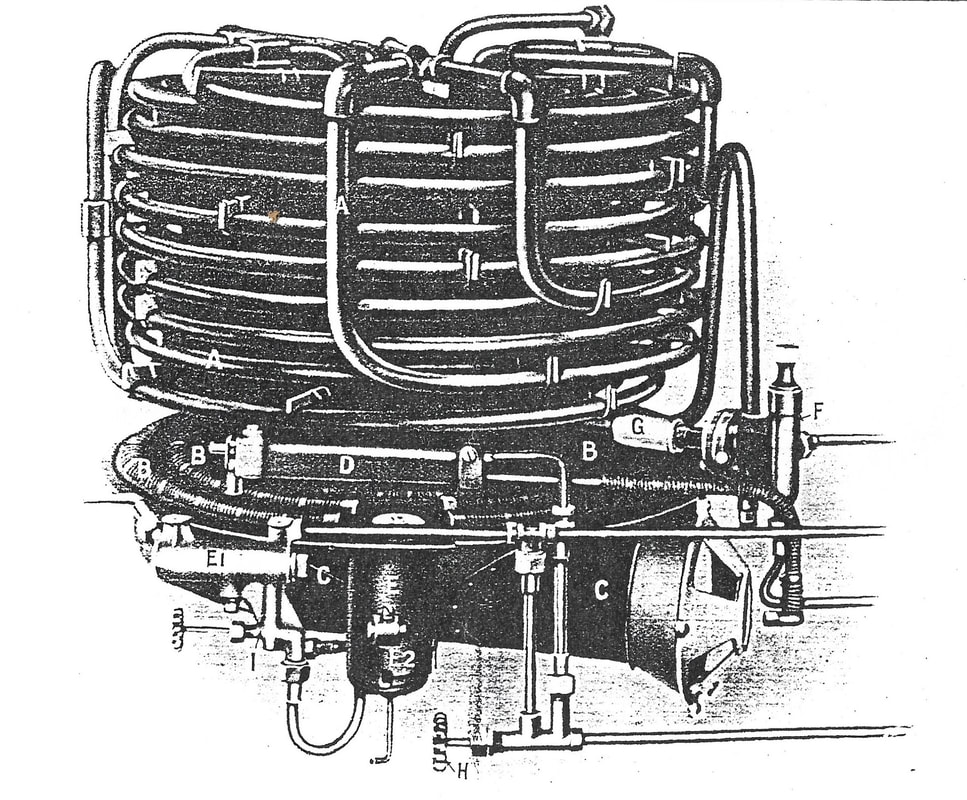
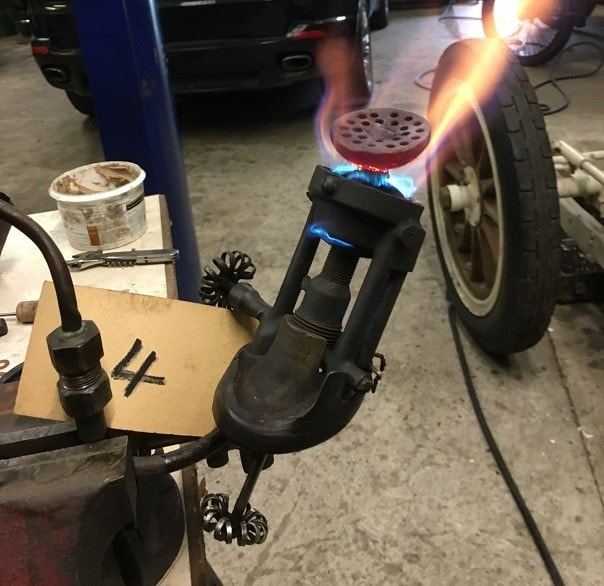
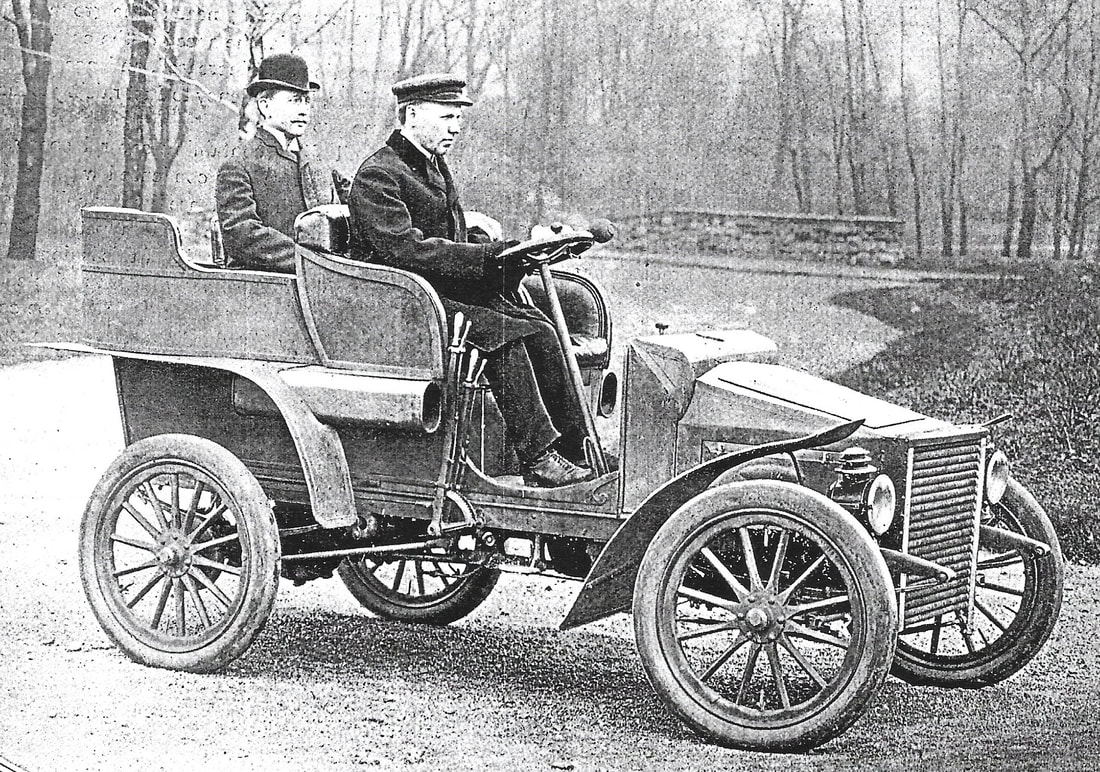

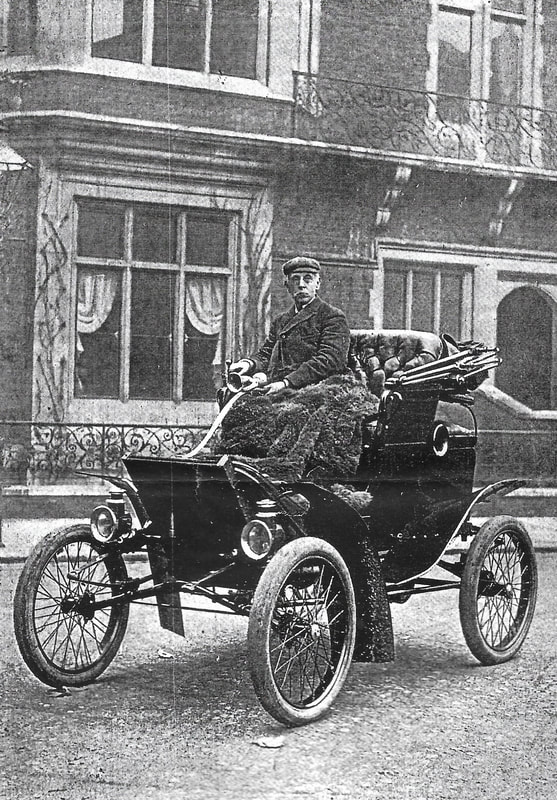
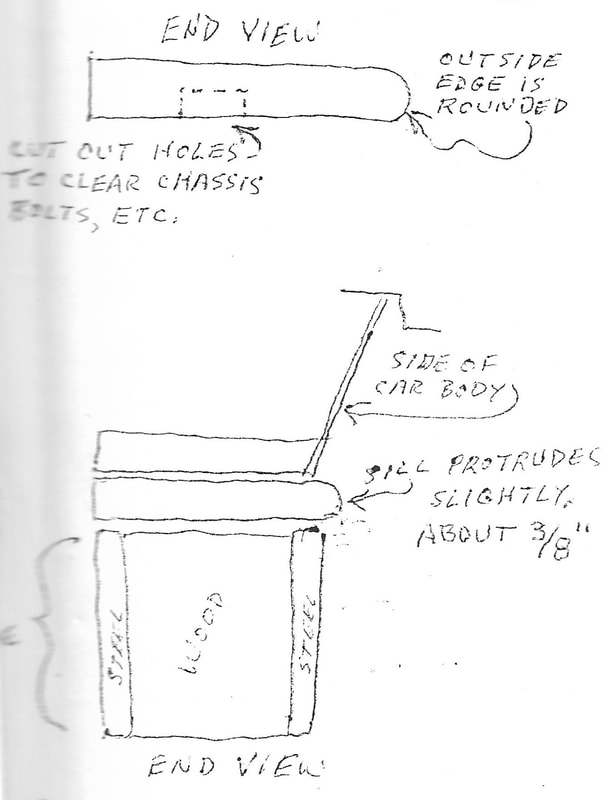
 RSS Feed
RSS Feed
